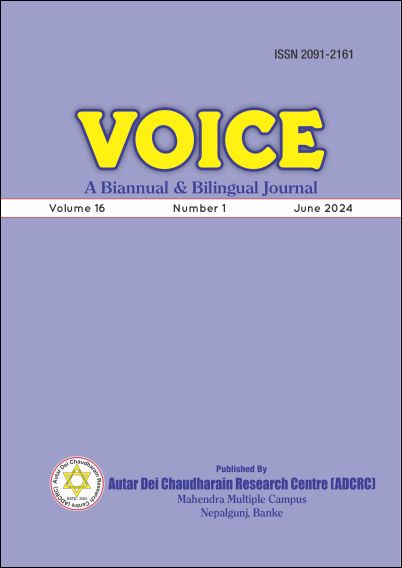Alcohol Use and Its Socio-Economic and Health Effects in the Tharu Community of Raptisonari Rural Municipality
DOI:
https://doi.org/10.3126/voice.v16i1.67420Keywords:
Alcoholism, Tharu Community, Socio-Economic Effects, Health ImpactsAbstract
This study examines the use and effects of alcohol consumption within the Tharu community of Raptisonari Rural Municipality, Banke District, Nepal. Alcohol, classified as a sedative, tranquilizer, hypnotic, or anesthetic based on consumption quantity, is the only drug whose self-induced intoxication is socially acceptable. The Tharu community exhibits a high prevalence of alcohol use, impacting health and socio-economic status. Despite its significance, no comprehensive study has been conducted on this issue within the Tharu community. This research employs a descriptive and quantitative approach, surveying 144 respondents from 200 Tharu households through interviews and observations. The findings reveal that 69.4% of male and 30.6% of female respondents consume alcohol, with significant use starting in teenage years. Home-made alcohol, or Raksi, is predominantly consumed (83.3%), with cultural habits (31.3%) and stress relief (22.9%) being primary motivations. The study highlights several adverse effects, including high blood pressure, family quarrels, low income, and other health issues. The research underscores the urgent need for targeted interventions to address alcohol-related problems in the Tharu community, emphasizing the importance of integrating screening for alcoholism into routine health practices. Understanding these dynamics is crucial for improving health outcomes and socio-economic conditions in the community.
Downloads
Downloads
Published
How to Cite
Issue
Section
License
Copyright (c) 2024 The Author(s)

This work is licensed under a Creative Commons Attribution-NonCommercial 4.0 International License.
CC BY-NC: This license allows reusers to distribute, remix, adapt, and build upon the material in any medium or format for noncommercial purposes only, and only so long as attribution is given to the creator.




